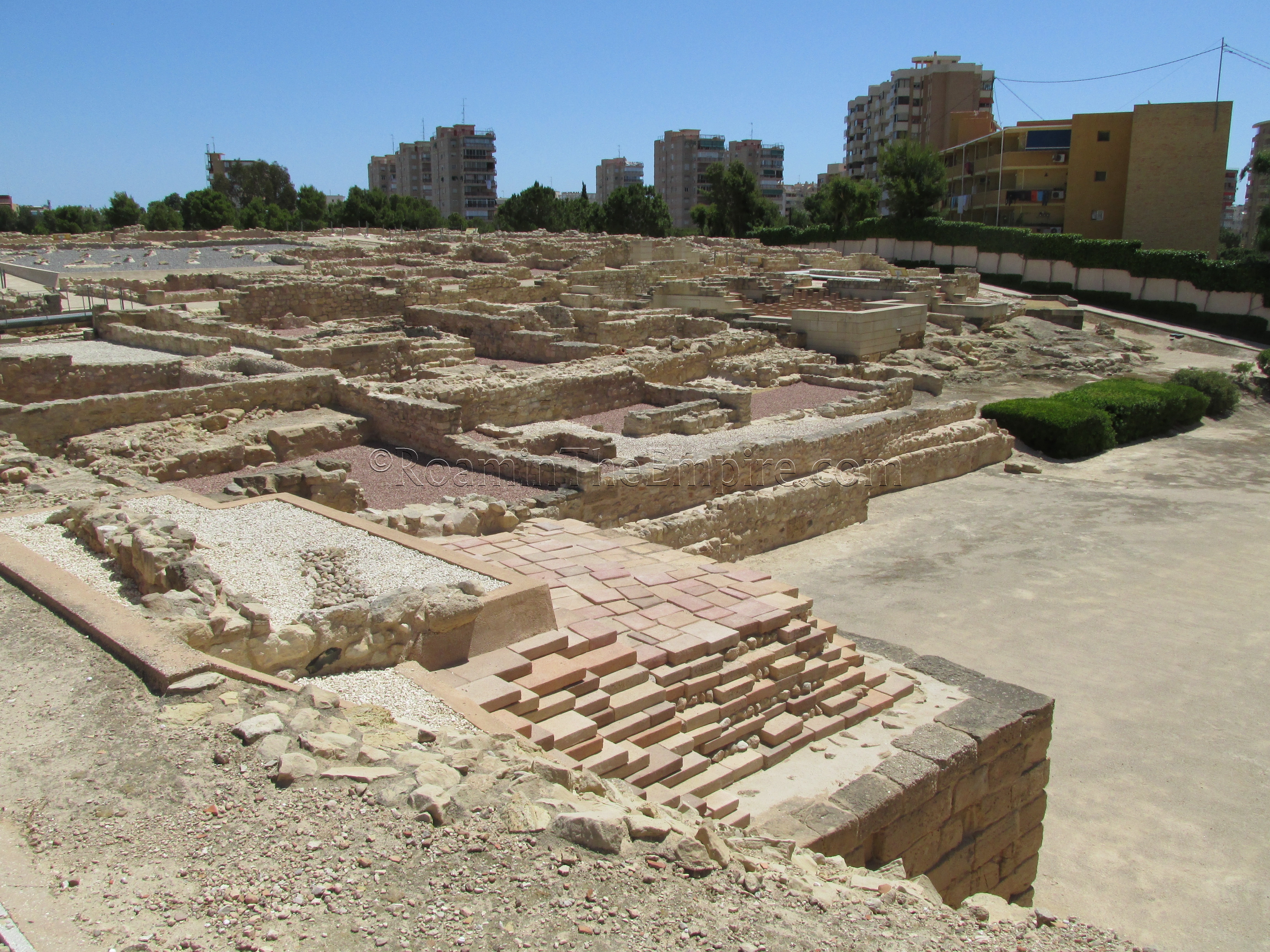
The Roman city of Lucentum, located in an outlying neighborhood of modern Alicante, seems to have begun as a settlement at least as early as the 5th century BCE. The name of that original settlement appears to have been, at some point, Akra Leuka, Greek for “white mountain”, probably in reference to the nearby Monte Benacantil. It was this name that likely gave rise to the name for the Roman settlement, and later the modern name. The exact origins of this settlement are somewhat unclear; it was possibly founded by one of the Greek colonies along the coast, or may have been an Iberian town. In either case, growing Carthaginian influence on the Iberian Peninsula eventually resulted in the city coming under Carthaginian influence. It was this Carthaginian association that likely resulted in its destruction around the time of the Second Punic War in the 3rd century BCE.

The location remained abandoned until the middle of the 1st century BCE when the city was re-founded by the Romans. Between its founding and the middle of the 1st century CE, Lucentum seems to have prospered and enjoyed many large public building projects during that period. Under Agustus, the city acquired municipium. By the end of the 1st century CE, however, Lucentum’s fortunes turned and the city fell into a gradual decline through the 3rd century CE, when the city seems to have been largely abandoned. There was occasional use of the site from the 3rd to 8th centuries CE, when the primary settlement location was moved to west during the Islamic period. At that time, Lucentum was used as a building materials quarry and a cemetery. Despite its destruction in the Second Punic War, Lucentum is seldom mentioned in the historical record. Both Pomponius Mela and Ptolemy mention the existence of the city and its general location, but offer no specific information.

Getting There: Alicante is a fairly large city and is pretty well connected to the rest of Spain. There is an airport outside of the city that gets in fairly regular budget flights from around Europe during the summer. The best way within Spain is probably by train, though. Valencia is the closest large city and has about a dozen departures for Alicante a day, ranging in travel times from about 1:40 to 2:10, and costing between 15 and 20 Euros each way. There’s a similar number of departures from Madrid, but, the journey is quite long by regular train and quite expensive by high speed train. The Spanish rail site, Renfe, is pretty easy to use and will give exact schedules and prices, as there is quite a bit of variation. It’s a fairly easy day trip from Valencia, but from other major cities it might be too long of a day.
There are essentially three major places to visit in the Alicante area; the archaeological site of Lucentum, the archaeological site of Baños de La Reina in the nearby town of El Campello, and the Museo Arqueológico de Alicante (MARQ). Fortunately, all three are along the routes of lines 1 and 3 of the TRAM Metropolitano de Alicante system. Even in the summer, though, the hours of the two archaeological sites can be rather unhelpful with long siesta breaks during the middle of the day. My itinerary through the sites started with the furthest away site, the Baños de La Reina, as I reasoned that I since I arrived in Alicante with some time before any of the sites opened, it was most effective to use that excess time on the longest trip. That site also had the most restrictive hours, with an earlier afternoon closing time and a very long siesta break, so hitting it during the morning opening is quite important, particularly if Alicante is a day trip.

The Alicante TRAM system doesn’t have a stop at the main train station, but there is one nearby. Exiting the main entrance of the train station, there is a street that roughly radiates out from the station called, fittingly, Avenida de la Estación. A few blocks down that street, to the northeast, is a large roundabout, and in the median for the roundabout is the entrance to the Luceros TRAM station. El Campello is in zone 2, so a 2.50 Euro ticket needs to be purchased, but once. Again, both lines 1 and 3 go from Luceros to El Campello, though line 3 terminates in El Campello, while line 1 continues on past to Benidorm. Between the two lines, there are about two dozen departures daily, once an hour, typically at 6 or 11 past the hour, depending on the line and the day. The approximate time of the journey is about 26 minutes. Exact details of the schedule can be found here at the TRAM website.
From the El Campello stop, getting to the site is fairly easy. After exiting the train, continue down the street in front of the stop (Av. de l’Estació on the south side of the tracks) in the direction the train continued. Eventually the street will end and turn south towards the beach. Continue down that street until it ends in a T-intersection. Turn left (northeast on Carrer de Sant Bartolomeu) and head down that road for about 500 meters past the marina and until you see a castle-like tower on the right hand side, a bit set off from the road. Head out that way, and past the tower a little bit is the peninsula on which the site is located.
The Baños de La Reina (also referred to as La Illeta Dels Banyets) is open in the summer (June 15th to September 15th) from 9:00 to 13:00 and 18:00 to 21:00 from Tuesday to Saturday, and from 9:00 to 13:00 on Sundays and holidays. The rest of the year, the hours are 10:00 to 14:00 and 15:30 to 17:30 from Tuesday to Saturday, and from 10:00 to 14:00 on Sundays and holidays. A 4 Euro combination ticket good for this site, the Lucentum site, and the MARQ can be purchased at any of the locations.
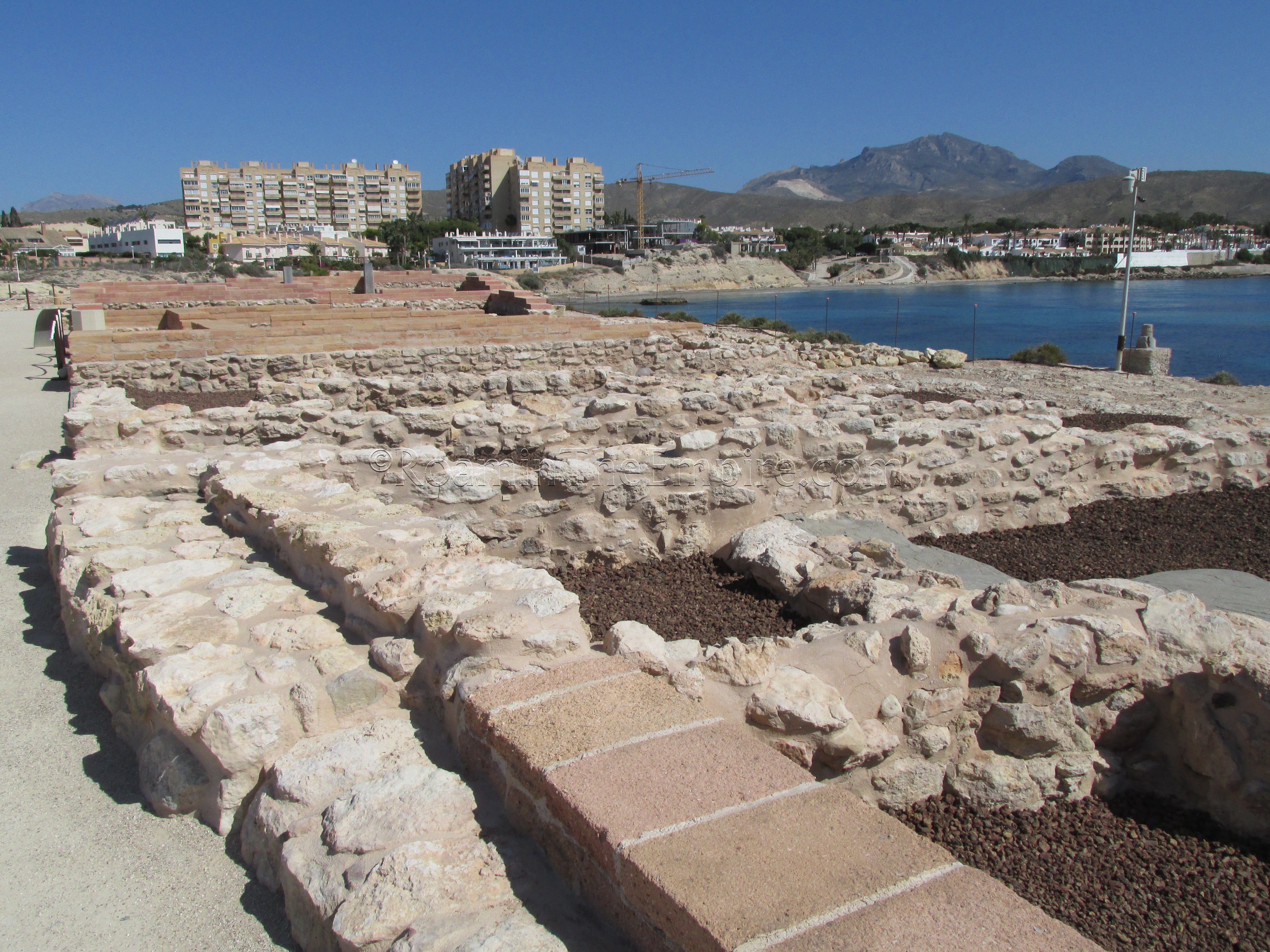
The spit of land that makes up the Illeta has several phases of occupation, with the Iberian and Roman being the most prominent among the remaining. A few pre-Iberian Bronze Age remains, including a cistern and hut, are also visible. The Iberian town appears to have originally been founded in the 5th century BCE with most of the exposed architecture belonging to a building program of the 4th century BCE. The Iberian constructions make up the majority of what remains at this site. Among them are a few streets, a dwelling, a wine press, two temples, and an oil production facility.

In the 1st century CE, a Roman villa was built on the location. The villa itself was rather modest and overlaid portions of the Iberian town. The main living area of the villa is mostly lost among the remains of the Iberian town, though the remains of the small, separate bathing complex associated with the villa has largely been preserved. There was a torcularium found at the site, indicating that wine or oil production was going on here. There are also areas that seem to have been devoted to farming.

Though somewhat viewable from the site, some rock carved fish tanks on the south and east sides of the peninsula are best viewed via a path that runs around the outside of the fenced off site. Facing the entrance of the site, there is a path that runs outside the fence on the right (south). The path is mostly pretty easy, though there are a few points that might give a little trouble to the less sure footed, particularly those wanting a close up view of the tanks. Two shallow tanks are encountered after a few minutes of walking. A few minutes further on, at the tip of the peninsula, is a series of deeper tanks cut into the rock. Interestingly, it is theorized that these were not for the personal use or ownership of the villa, but were rather publicly used to supply fish to a nearby settlement.

Overall, the site is pretty well signed. There are lots of informative placards all over the site explaining each of the areas. Again, it is a mostly Iberian site, the Roman remains are scant. Honestly, the fish tanks are kind of the star of the show here, as far as the Roman side of things. It’s well worth the trek out, and the entrance is included with a ticket to the MARQ and Lucentum, so, unless under time restraints, there’s really no reason not to visit.
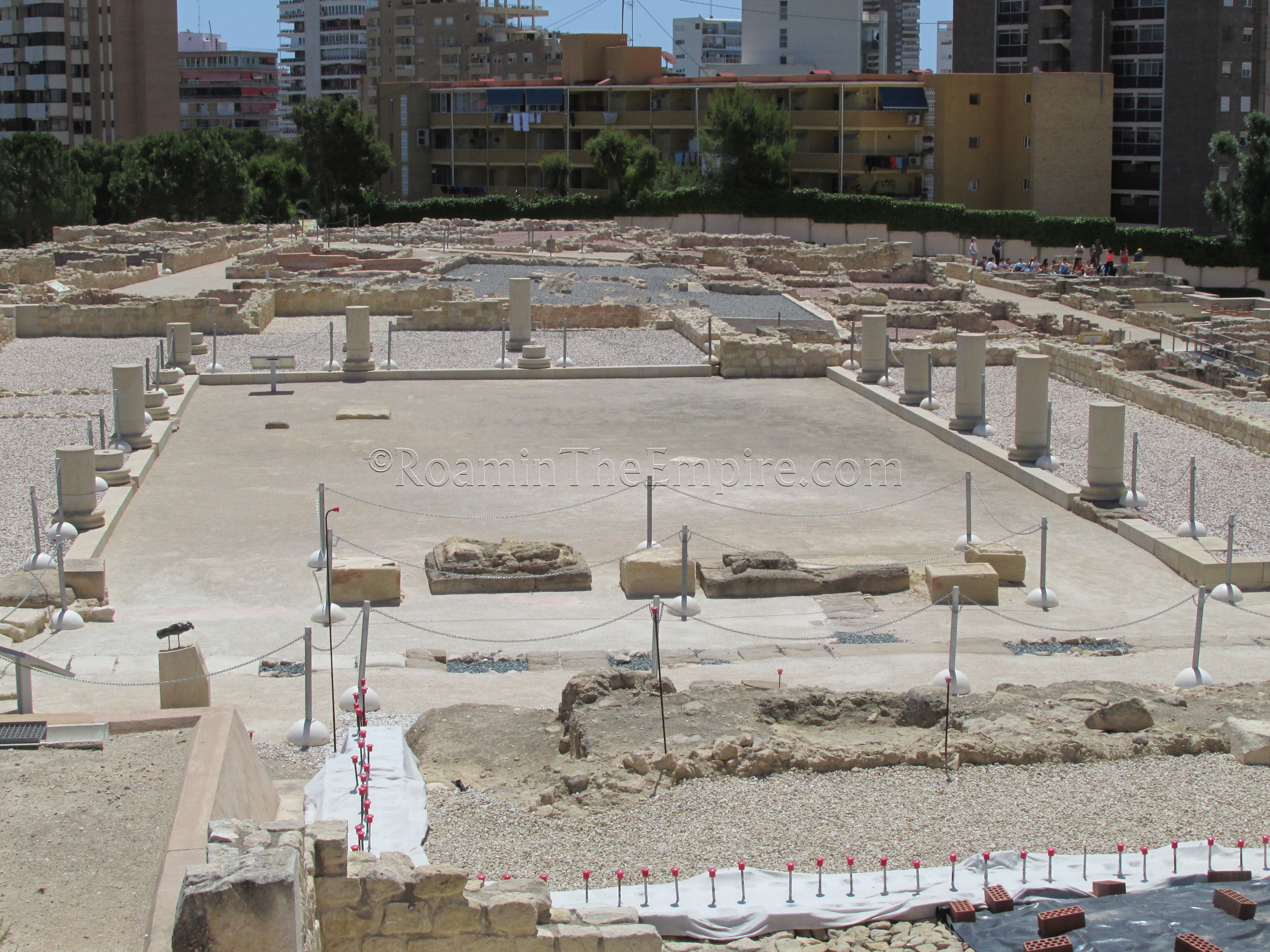
To get to Lucentum, just head back to the same TRAM stop and get on the train going in the other direction. There is a similar schedule going back, about once an hour, so it helps to know the schedule so that you’re not sitting at the stop for a long period of time. The ride is about 14 minutes, and any tram going back in the direction of Alicante will be stopping at Lucentum. The name of the actual stop to get off at is also Lucentum, so it’s very helpful in that way. The stop for Lucentum is under an overpass. Right outside of this overpass, to the west, there is a split in the rail tracks, and the easiest thing is to follow this split in the tracks around a curving street to the south, until it intersects with a large, boulevarded street with a median (Av. Esportista Miriam Blasco). Follow this street south, away from the overpass, and take the second right (Camino Colonia Romana) and follow that westward a few blocks until you reach an intersection with a large hill on the left side (southwest corner). Turn left on to that street and follow it until there are a set of stairs that lead up the hill, and this will take you to the site entrance.
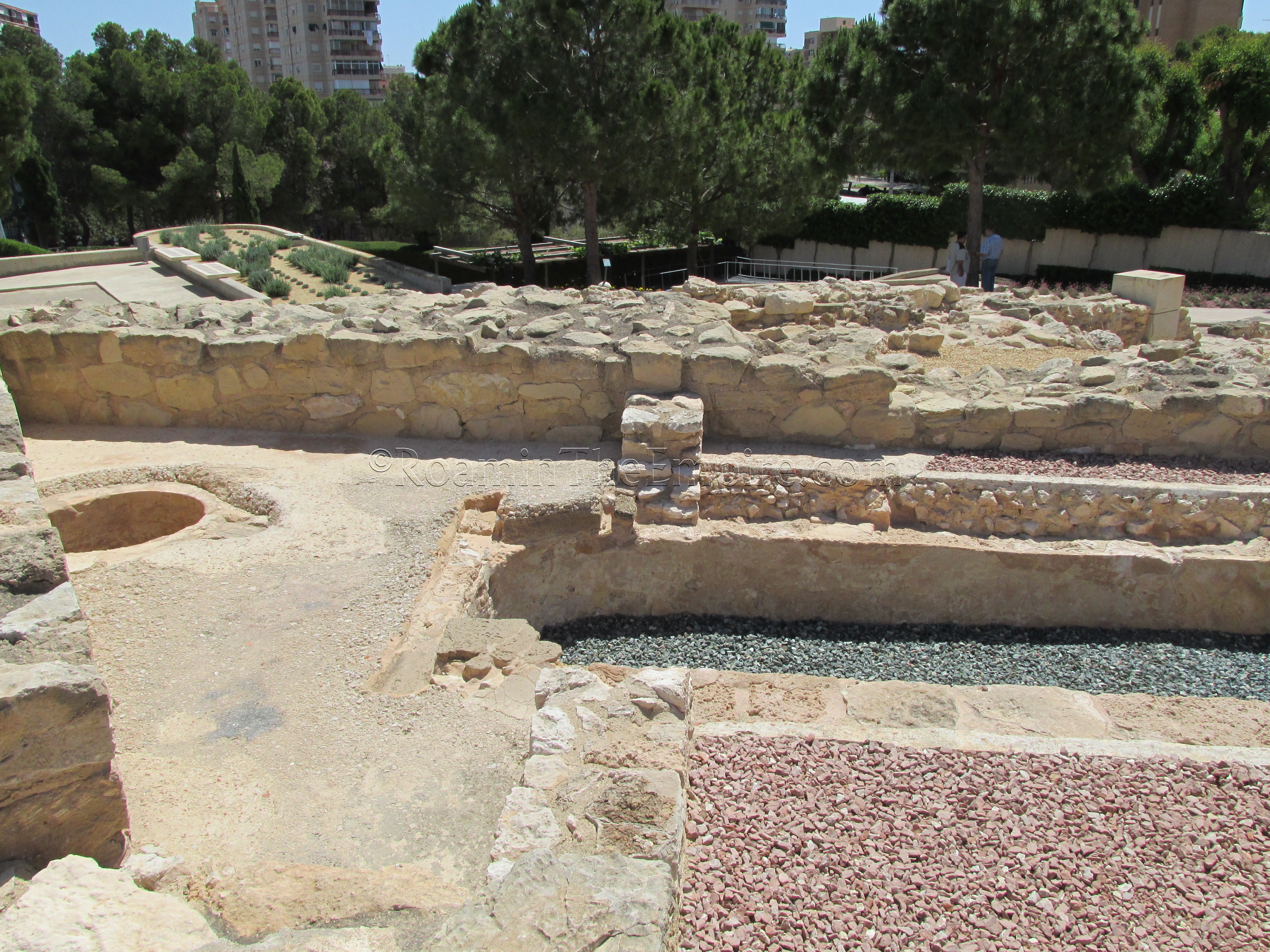
The Lucentum archaeological site (also referred to as Tossal de manises) is open during the summer (June 15th to September 16th) from 9:00 to 13:00 and 18:00 to 21:00 on Tuesday through Saturday and from 9:00 to 13:00 on Sundays and holidays. The rest of the year it is open from 10:00 to 14:00 and 15:30 to 17:30 on Tuesday through Saturday, and from 10:00 to 14:00 on Sundays and holidays. It is closed on Monday all year. Lucentum is included in the 4 Euro combination that includes the MARQ and Baños de La Reina.

While the majority of the remains at the site date to the Roman period of occupation, there are a few examples of early architecture that have been uncovered. In some sections of the city wall, particularly those on the east side, the 3rd century BCE pre-Roman walls can be seen. Along the path that runs parallel above the eastern wall, the remains of an Iberian style dwelling and a Carthaginian style dwelling can be seen. A section that was later used as an Islamic era cemetery is also visible.
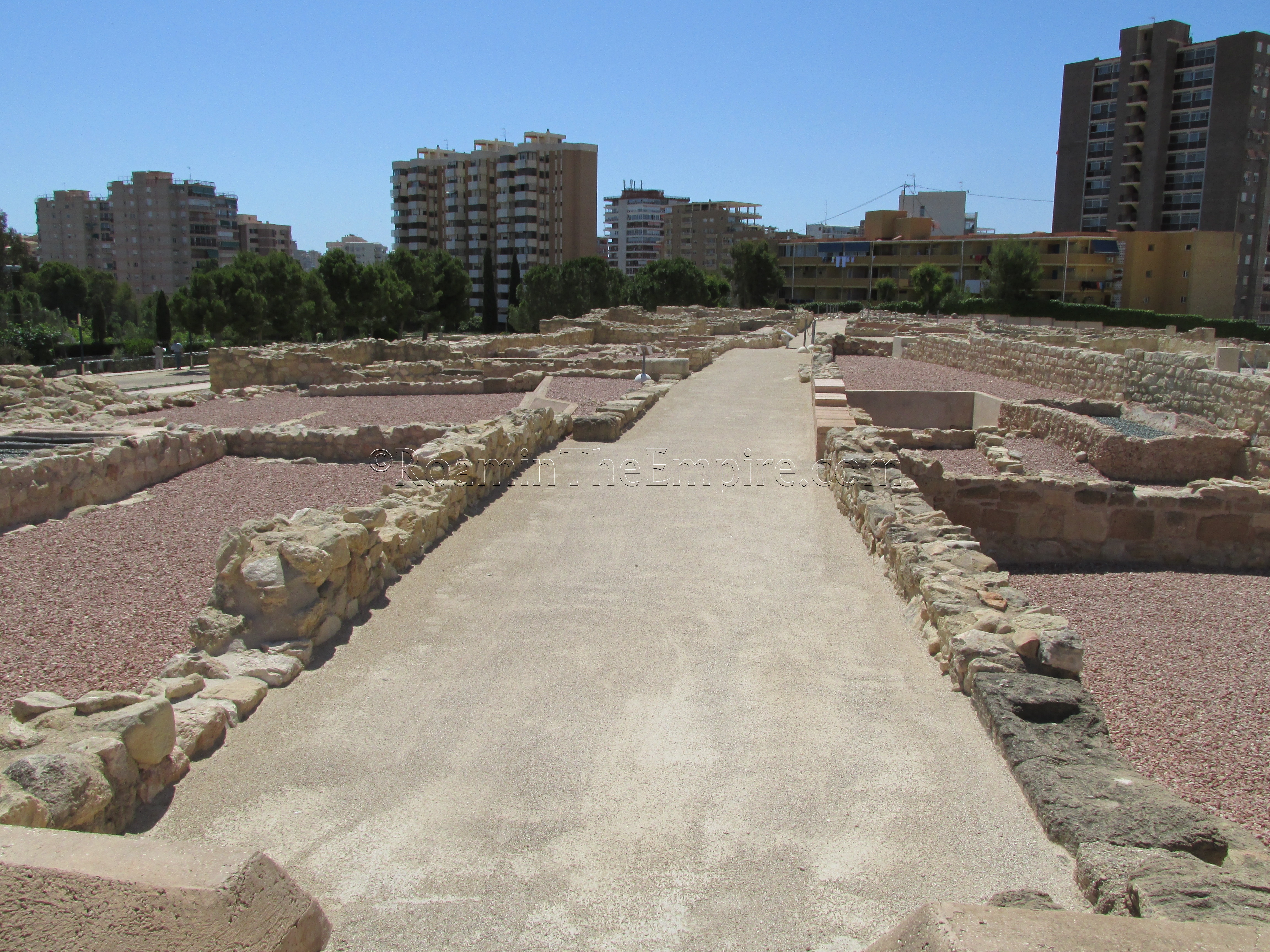
Much of the excavated portion of the Roman site is made up of indistinct domestic and commercial structures dating back as far as the 1st century BCE. The form of these buildings are generally pretty uniform, though they are intermittently punctuated by cisterns, which are conveniently filled with a blue/green rock surface, as opposed to the red in the rest of the structures, to distinguish those structures.
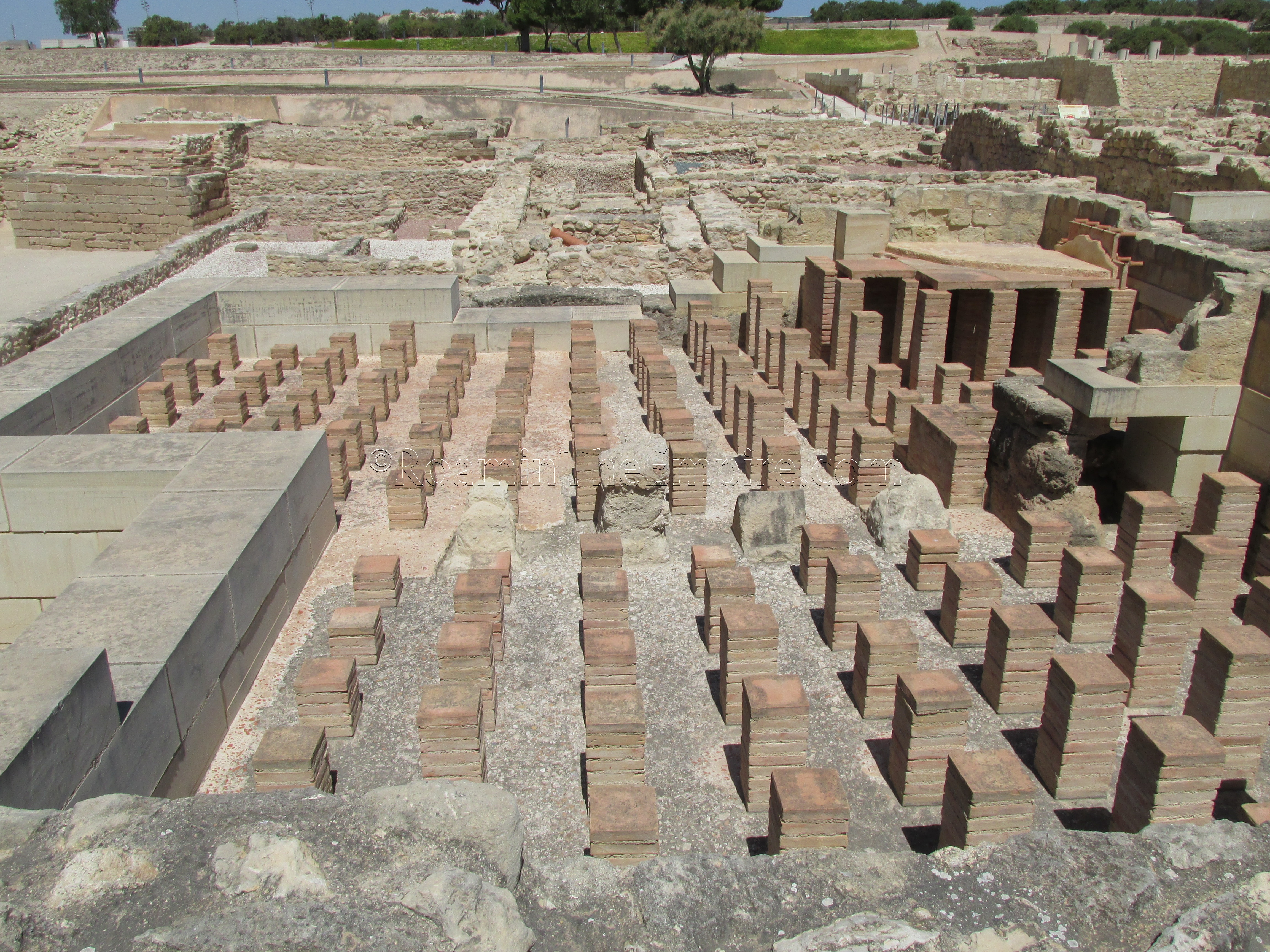
Some of the more unique structures are the monumental eastern gate, a few bathing complexes, and the forum and an associated temple; all dating to a major building phase during the 1st century CE. The bathing complexes are fairly well preserved and the different rooms are clearly visible. Near the western entrance to the forum is the replica of a section of ground that was found with human, goat, and dog footprints impressed upon it. The original is in the MARQ. In a section separate from the main part of the excavations is a large 400 square meter domus, called the Domus with the Peristyle. This domus was built on the location of the town wall after it fell out of use and was demolished. On top the top of the hill overlooking the site is a portion of mosaic flooring dating to the end of the 2nd, beginning of the 1st century BCE.

Overall, there are a lot of interesting things to see at this site. It is well signed in English, Spanish, and Catalan. The signs are quite helpful and informative and mark out all of the points of interest at the site. The level of conservation is a little high in some places, looking more modern than ancient, but not as bad as some sites I’ve been to. At the actual site, I spent a little over an hour, and with walking times to and from the stop, no more than two hours should be needed.

The final stop for the Alicante area was the Museo Arqueológico de Alicante (MARQ). Again, back track to the same station and just pick up the train continuing on towards the west, in the direction you were traveling from El Campello. The stop to get off this time is MARQ-Castillo, about a 9 minute ride from Lucentum. This stop is at the base of the large mountain where the Castle Santa Barbara is located. To get to the museum, head up out of the underground stop, head directly away from the mountain, crossing the street, and taking the next street to your left. This short street leads to a plaza, on the other side of which is the entrance to the museum. The address is Placa Dr. Gómez Ulla, s/n, 03013.

The MARQ is open during the summer (June 15th to September 16th) between 10:00 to 14:00 and 18:00 to 22:00 from Tuesday to Saturday, and from 10:00 to 14:00 on Sundays and holidays. The hours during the rest of the year are actually more convenient, and were fortunately those that were in effect when I visited, as the museum is open midday when the sites are closed. Those hours are 10:00 to 19:00 from Tuesday to Friday, 10:00 to 20:30 on Saturday, and 10:00 to 14:00 on Sundays and holidays. The museum is closed on Mondays. Admission is part of the 4 Euro combination ticket with Lucentum and Baños de La Reina.

The collection at the MARQ is reasonably sized, but somehow seemed a bit smaller than the size of the museum would have indicated from the outside. There are artifacts primarily from the pre-historic and Roman periods. Most of the Roman artifacts come from the site of Lucentum and Baños de La Reina, along with a few things from other sites in the area. It is also comprised mostly of smaller artifacts with no large statuary and not even very many inscriptions; there are a lot of ceramics and small household type objects.
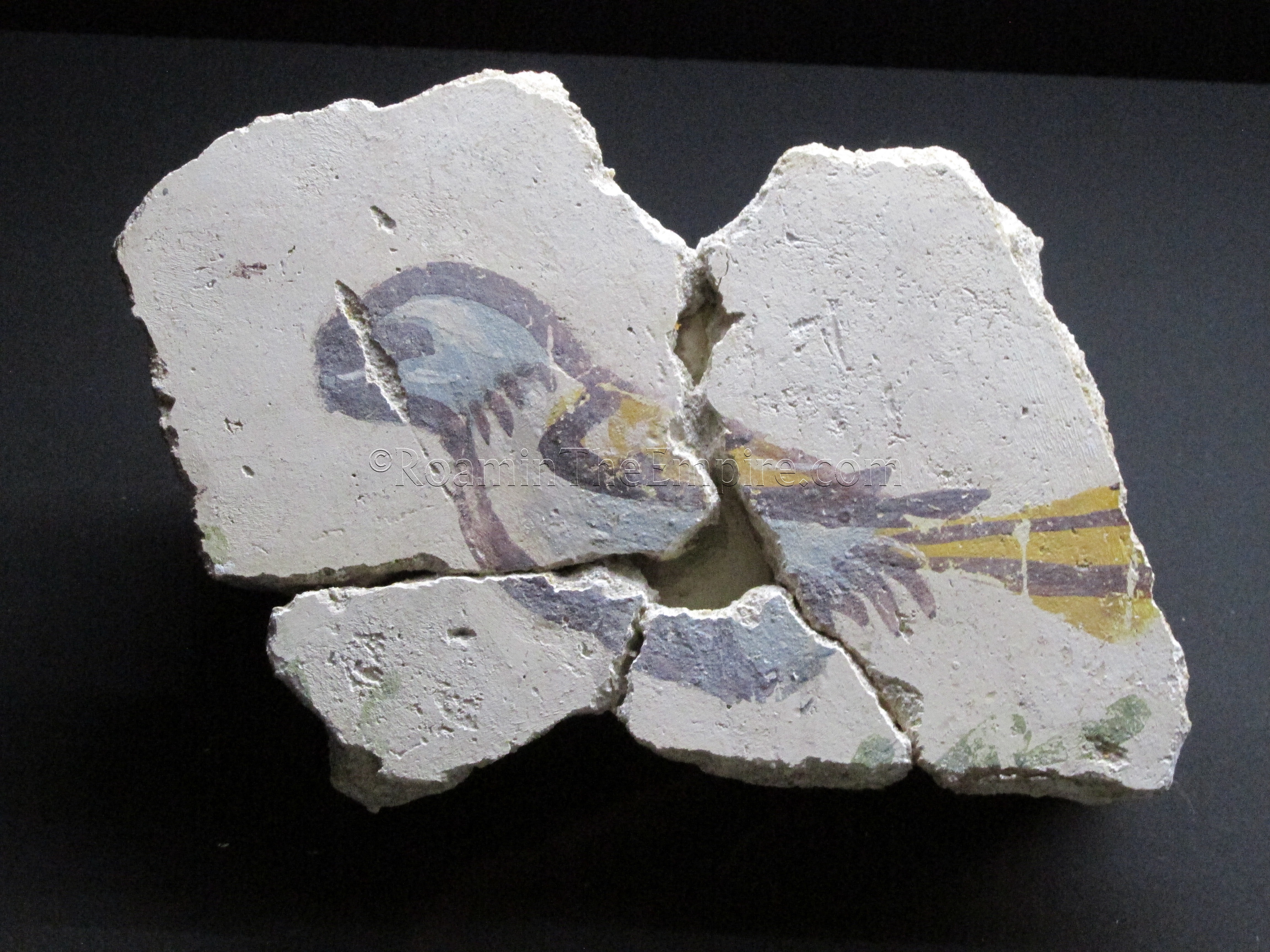
Among the particularly interesting finds at the museum, there is the previously mentioned footprint slab from Lucentum at the museum, as well as a mosaic and a few fragments of wall painting. A bronze hand, presumably from a statue of an emperor, found at the forum of Lucentum, is also among the more interesting pieces.
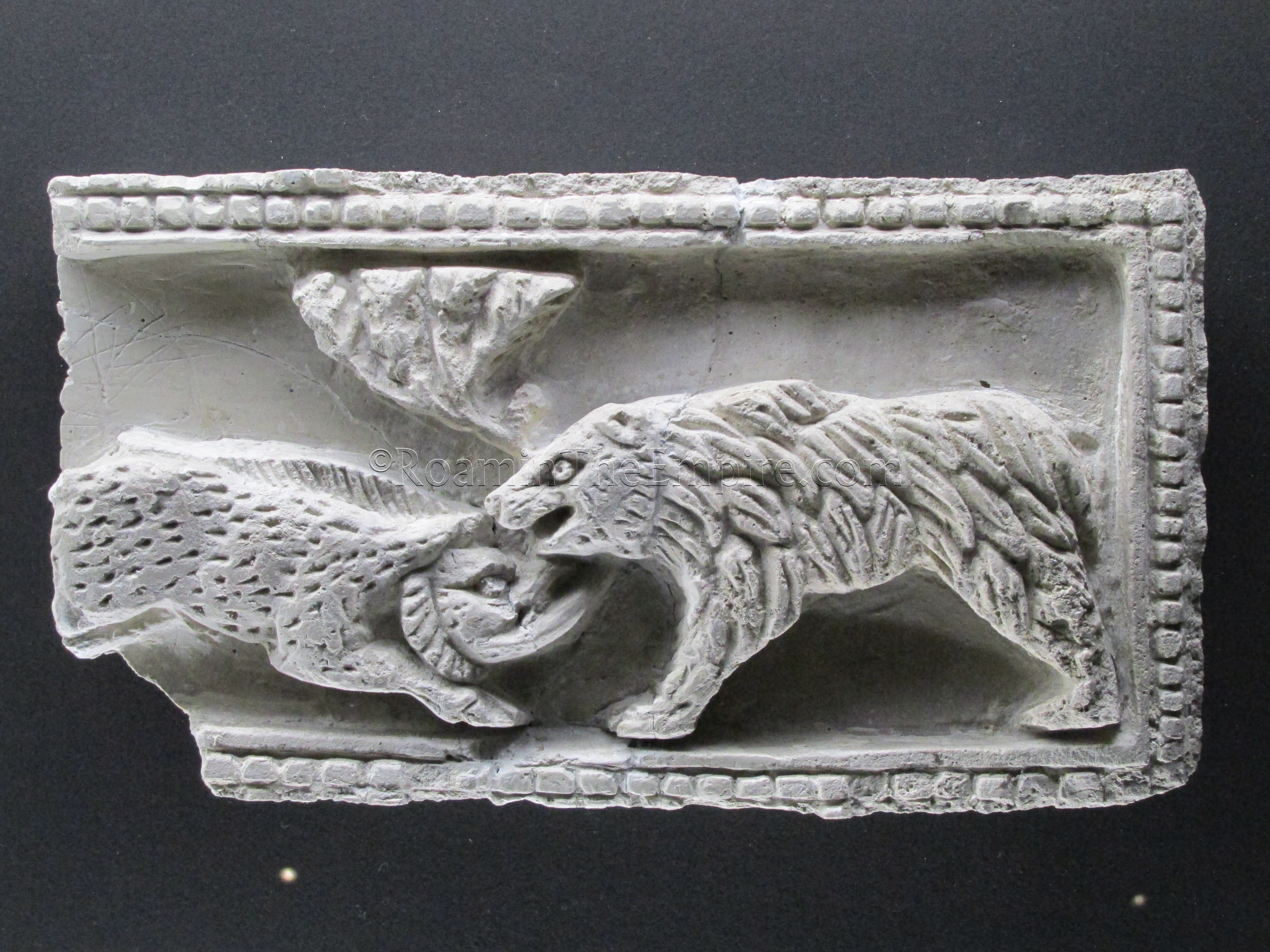
The majority of the information in the museum is in Spanish and Catalan, with very few placards having an English translation. The museum itself is quite nice and modern feeling with well put together displays. Again, aside from larger statuary and the typical wealth of funerary inscriptions, the collection of the museum does cover a lot of ground while limiting things to a manageable number of artifacts, rather than the case after case of mostly similar ceramics that are found at other museums. In all, it took me about an hour and a half to get through the museum, though moving quickly through the non-Roman sections, as usual.
Sources:
Curchin, Leonard A. Roman Spain: Conquest and Assimilation. New York: Routledge, 1991.
MacKendrick, Paul. The Iberian Stones Speak: Archaeology in Spain and Portugal. New York: Funk & Wagnalls, 1969.
Pliny, Naturalis Historia, 3.3.
Pomponius Mela, Description of the World, 2.93.
Ptolemy, Geographia, 2.5.
Stillwell, Richard, William L. MacDonald, and Marian Holland. McAllister. The Princeton Encyclopedia of Classical Sites. Princeton, NJ: Princeton U Press, 1976.


